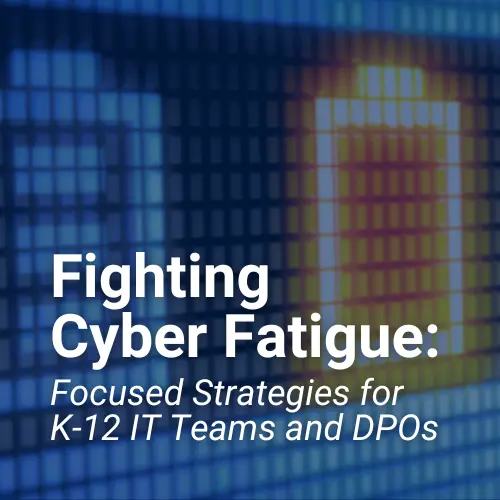Natural disasters, power outages, IT system crashes, and cyberattacks — these are just some of the interruptions that may prevent your organization from operating as usual. Some events even alter how a business runs altogether. For instance, the COVID-19 pandemic pushed more companies toward remote, cloud-based operations. These circumstances stress the importance of a flexible business continuity and disaster recovery (BCDR) solution.
At M.A. Polce, small and medium-sized organizations find high-quality and cost-effective IT and cybersecurity services from a team that works closely with yours to provide exceptional support. In this article, we discuss cloud BCDR and provide guidance on successful implementation for your organization.
Understanding Business Continuity and Disaster Recovery
Business continuity and disaster recovery are related but different concepts. Some businesses have integrated BCDR solutions, while others have separate continuity and disaster recovery plans. Business continuity is developing policies and procedures to ensure an organization’s essential functions are operational during and after a disaster. Meanwhile, disaster recovery is more IT-focused; it outlines how the IT department will recover data and restore networks and systems following a disaster.
Cloud BCDR is one of several solutions; organizations may also consider on-site or hybrid BCDR. On-site BCDR involves maintaining a secondary on-premises repository to store business-critical information in case of a disaster. Cloud-based BCDR includes partnering with a cloud provider for storage, backup, and recovery. The right solution will depend on how organizations store data. For instance, an organization with remote operations may find cloud-based BCDR the most beneficial.
Why BCDR Matters
BCDR’s primary purpose is to mitigate the adverse effects of disruptions and help businesses experience minimal downtime. However, it is essential for several reasons. The right BCDR solutions can prevent your organization from compliance concerns and reputational harm.
Depending on your industry, your business may be subject to different standards for data privacy. For instance, healthcare organizations must follow HIPPA guidelines. Working with a cloud BCDR service provider who thoroughly understands cybersecurity risk management and compliance ensures your business maintains compliance even in complex cloud environments.
What’s more, the planning required to devise a well-organized approach to BCDR makes a business more resilient. It encourages IT teams to continually assess practices and improve them.
Benefits of Cloud BCDR
BCDR is especially important for small and mid-sized organizations. According to Government Technology, 40% of small businesses never reopen after disasters, and of those that do reopen, 25% fail within one year. In this way, investing in cloud BCDR protects small enterprises and can make them more competitive.
Consider the following other benefits of cloud BCDR solutions:
Flexibility and Scalability
Using hardware or software for BCDR comes with limitations. Businesses only have so much space in offices for hardware, and computers only have so much capacity for software. Providers typically offer cloud services under a pay-as-you-go model, allowing businesses to increase cloud services as they grow.
Faster Recovery Time
When mission-critical data is accessible in the cloud, it allows for speedy recovery from disasters. This leads to seamless business continuity and reduces downtime, helping companies maintain productivity.
Increased Fault Tolerance
Since cloud BCDR isn’t bound to one location, your business can host backup data in an area separate from the main office or data center. This provides added peace of mind if a natural disaster or similar occurrence affects all servers in the building.
Best Practices for Implementing Cloud BCDR
Every organization has unique concerns with cloud BCDR, so the process looks different in each case. That said, there are some steps all businesses should consider with their business continuity and disaster recovery strategy. These include:
Assessing Your Organization’s Needs
The first step in implementing cloud BCDR is understanding your organization’s needs. This means identifying your recovery objectives. Some research finds that only about one in six executives at small and medium-sized organizations know their recovery objectives, emphasizing how essential this process is for achieving better BCDR.
What are recovery objectives? These include recovery time objectives (RTO) and recovery point objectives (RPO). RTO refers to the maximum downtime your organization is willing to accept for a particular service or system, while RPO is the maximum amount of data loss. Other factors to consider are your budget, risk tolerance, and compliance requirements.
Selecting the Right Cloud BCDR Solution
Evaluating your needs also helps determine the right cloud BCDR solutions. Review your options, noting the cloud provider’s availability, commitment to security, and ability to offer scalable services. You also want to carefully read the service level agreement (SLA) to ensure the terms and conditions meet your expectations.
Developing and Testing Your BCDR Plan
Although the cloud provider will handle backup and restoration, you still need a BCDR plan. Craft your plan with your RTO and RPO in mind, and test it regularly with disaster simulations to identify areas for improvement. Remember that your BCDR strategy is an ongoing process that should be monitored and updated as new cyber threats and concerns pose additional challenges to disaster recovery and business continuity.
Conducting Regularly Scheduled Backups and Data Replication
Businesses want to conduct frequent data backups. A great way to achieve regular backups is by creating a schedule in advance so that all team members involved know about this task. Companies may wish to backup data to other locations in addition to the cloud, such as hard drives or local storage. Many organizations maintain an immutable copy of data that no one can change or remove for further security.
Training Your Employees on Cloud BCDR
Business executives and IT managers shouldn’t be the only personnel aware of BCDR policies and processes. Inform the whole team of the plan and update them as it evolves. Additionally, all employees should have a list of contacts from the IT department to call if they need help with backups or similar tasks. A list containing contact information of partners, senior leadership, law enforcement, and other key stakeholders should also be created.
Cloud BCDR Solutions from M.A. Polce
The need for business continuity and disaster recovery is imminent. Security Magazine cites research finding only about 50% of organizations have established a company-wide disaster recovery plan. This means nearly half of all businesses are missing out on the enhanced resiliency cloud BCDR delivers.
As mentioned, choosing the right partner is key when investing in cloud BCDR solutions. At M.A. Polce, small and medium-sized organizations find an IT services provider offering solutions tailored to their needs. SOC 2-certified, and NIST compliant, M.A. Polce delivers the technology, support, and security organizations need to achieve their goals.
The impact of a disaster on your business will depend on how much you prepared beforehand. Having a tested BCDR plan will help you overcome unexpected events.
In addition to cybersecurity, M.A. Polce provides IT services, including private cloud hosting out of two state-of-the-art data centers, cyber risk management, and compliance solutions that businesses find crucial for maintaining better security in and outside of the cloud. Contact us today to learn more about how we can meet your IT needs.



